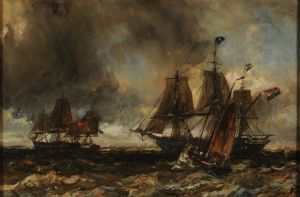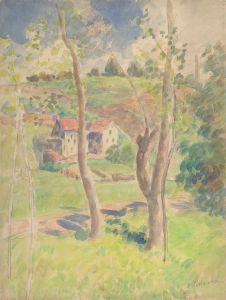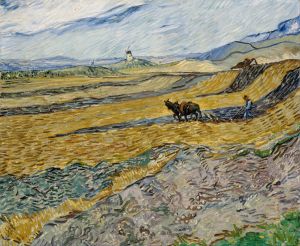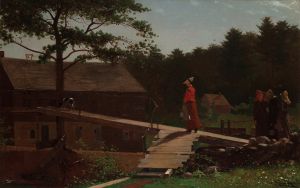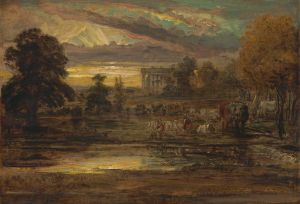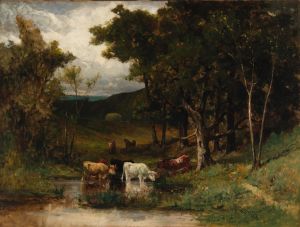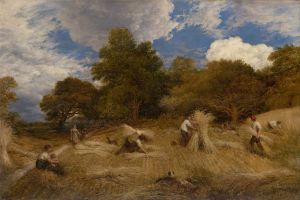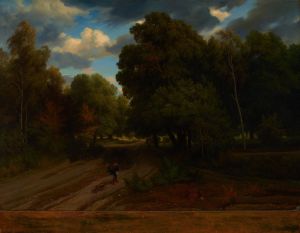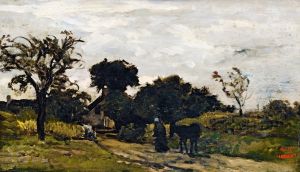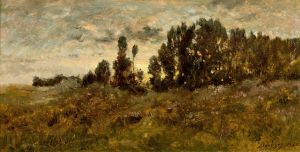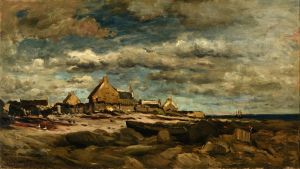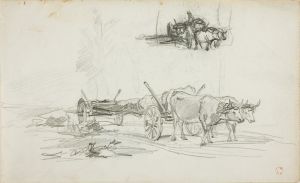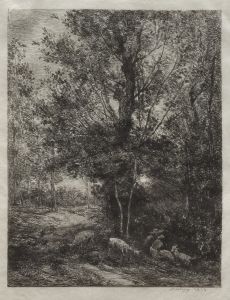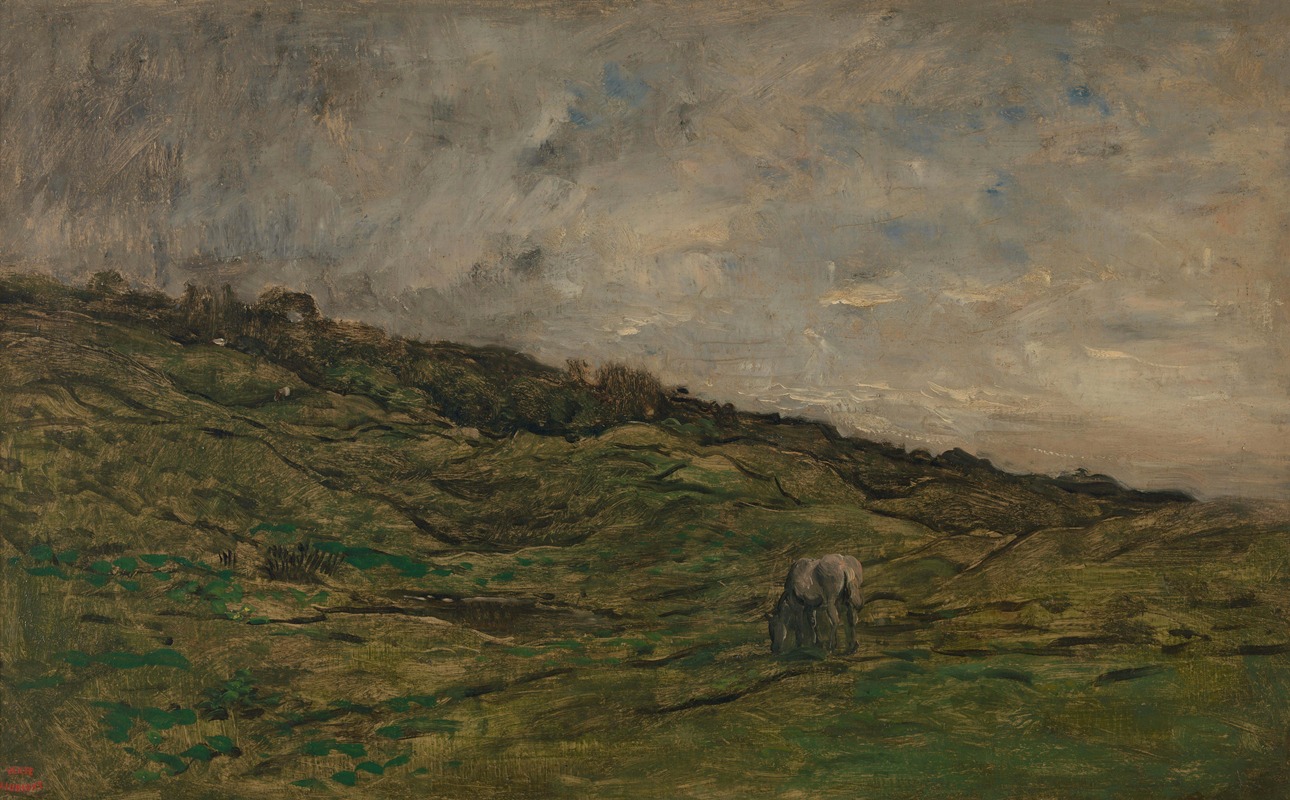
Pastures at Graves near Villerville
A hand-painted replica of Charles François Daubigny’s masterpiece Pastures at Graves near Villerville, meticulously crafted by professional artists to capture the true essence of the original. Each piece is created with museum-quality canvas and rare mineral pigments, carefully painted by experienced artists with delicate brushstrokes and rich, layered colors to perfectly recreate the texture of the original artwork. Unlike machine-printed reproductions, this hand-painted version brings the painting to life, infused with the artist’s emotions and skill in every stroke. Whether for personal collection or home decoration, it instantly elevates the artistic atmosphere of any space.
Charles François Daubigny was a prominent French painter associated with the Barbizon School, a movement that played a significant role in the development of landscape painting in the 19th century. One of his notable works is "Pastures at Graves near Villerville," which exemplifies his approach to capturing the natural beauty of rural France.
Daubigny was born in Paris in 1817 and was initially trained by his father, Edme-François Daubigny, who was also a painter. He further honed his skills under the tutelage of artists such as Paul Delaroche. Daubigny became known for his innovative techniques and his ability to depict the subtleties of light and atmosphere in his landscapes. His work often featured scenes from the French countryside, particularly the regions along the Seine and Oise rivers.
"Pastures at Graves near Villerville" is a testament to Daubigny's dedication to plein air painting, a method that involves painting outdoors to capture the natural light and environment directly. This approach was influential in the transition from the more formal and idealized landscapes of earlier periods to the more naturalistic and spontaneous depictions that characterized the Barbizon School and later Impressionism.
The painting itself captures a serene pastoral scene near Villerville, a small commune in the Calvados department in the Normandy region of France. The area is known for its picturesque landscapes, which have inspired numerous artists over the years. In this work, Daubigny employs a soft, muted palette to convey the tranquility of the pastures, with gentle brushstrokes that suggest the movement of light and shadow across the fields.
Daubigny's technique often involved a careful balance between detail and abstraction, allowing viewers to experience the essence of the landscape without being overwhelmed by minutiae. This approach is evident in "Pastures at Graves near Villerville," where the focus is on the overall mood and atmosphere rather than specific details of the scene.
Throughout his career, Daubigny was celebrated for his ability to capture the ephemeral qualities of nature. His work had a significant impact on the Impressionists, particularly Claude Monet, who admired Daubigny's commitment to painting en plein air and his innovative use of color and light. Daubigny's influence is evident in the way the Impressionists approached landscape painting, emphasizing the importance of capturing the momentary effects of light and atmosphere.
"Pastures at Graves near Villerville" is a fine example of Daubigny's contribution to the evolution of landscape painting. It reflects his deep appreciation for the natural world and his skill in translating that appreciation onto canvas. The painting remains an important part of his oeuvre, illustrating the transition from the Barbizon School to the Impressionist movement and highlighting Daubigny's role as a bridge between these two significant periods in art history.
Charles François Daubigny continued to paint and exhibit his work until his death in 1878. His legacy endures through his paintings, which continue to be celebrated for their beauty and their role in the development of modern landscape painting.





